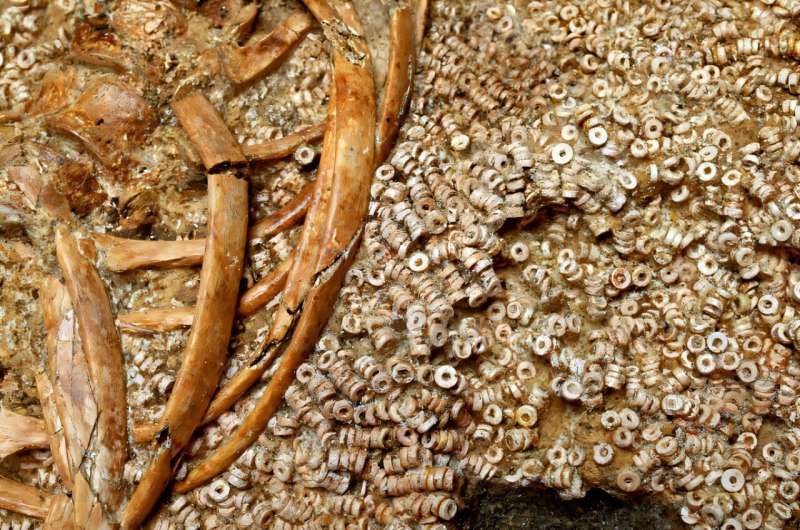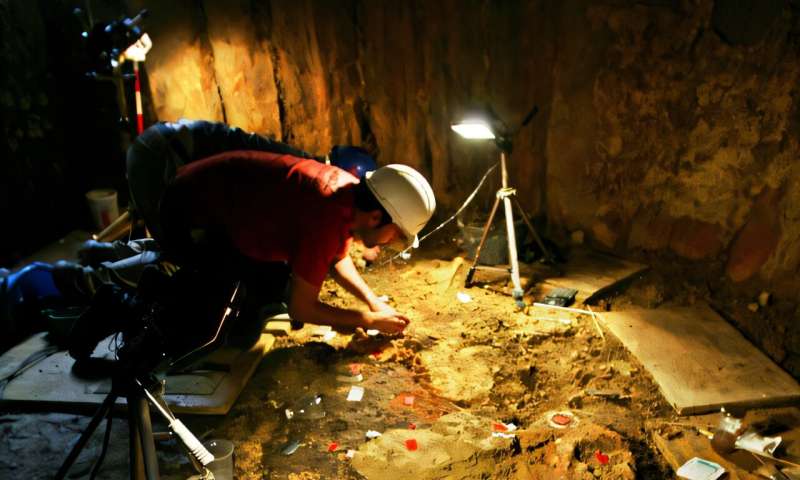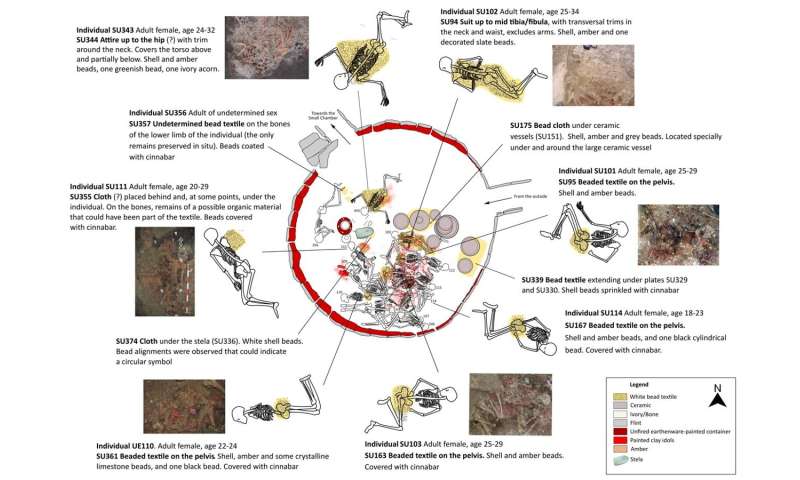January 30, 2025 report
This article has been reviewed according to Science X's editorial process and policies. Editors have highlighted the following attributes while ensuring the content's credibility:
fact-checked
peer-reviewed publication
trusted source
proofread
Largest single-burial assemblage of beads confirmed at ancient Montelirio grave site

A large team of archaeologists, historians and prehistory specialists affiliated with a host of institutions across Spain has confirmed the existence of the largest single-burial assemblage of beads ever found, at an ancient Montelirio grave site in Spain. For their paper published in the journal Science Advances, the group studied a 5,000-year-old tomb in a southwestern part of Spain.
Tholos de Montelirio is a megalithic archaeological dig site in Spain, with remains and artifacts dated to between 2875 and 2635 BC. It is believed the site was used for approximately 200 years to bury people in its numerous tombs. The site was first discovered in 1868, but was abandoned for many years. It has only seriously been studied since 1980.
In this new research, the team studied remains found recently in a tomb approximately 100 meters away from the famous "Ivory Lady"—so named because her remains were buried with an ivory comb and an elephant tusk, along with multiple other artifacts.
The remains of 20 people were found in a single tomb, 15 of which have been confirmed to be women—the gender of the other five was not able to be determined. Digs in the tomb over the past several years have revealed a lot of beads, which are believed to have been threaded together to make clothes for the person who was entombed.
This new dig found many more. What is surprising is the sheer number of them—the team estimates that there are more than 270,000 beads in the tomb. Each was made by shaping a single seashell and boring a hole through its center. The huge number represents the largest single-burial assemblage of beads ever found in any grave site.
-

Montelirio beads in situ. (A) Excavation process of Individual 343. Credit: A. Acedo García -

Montelirio beads in situ. (B) Detail of the threaded beads recorded underneath Individual UE 343 (belonging to attire UE 344). Credit: David W. Wheatley
The researchers note that making such a large number of beads represents a colossal amount of labor. After attempting to make some themselves, they suggest it would have taken the people who made them approximately 10 minutes to make just one. That works out, they note, to 10 people working eight hours every day for 206 days to make all the beads they found in the tomb.
This, they claim, strongly suggests that the women who were buried wearing the beaded clothes must have been very highly esteemed in their society.
More information: Leonardo García Sanjuán et al, A multi-analytical study of the Montelirio beaded attires: Marine resources, sumptuary crafts, and female power in copper age Iberia, Science Advances (2025). DOI: 10.1126/sciadv.adp1917
Journal information: Science Advances
© 2025 Science X Network


























